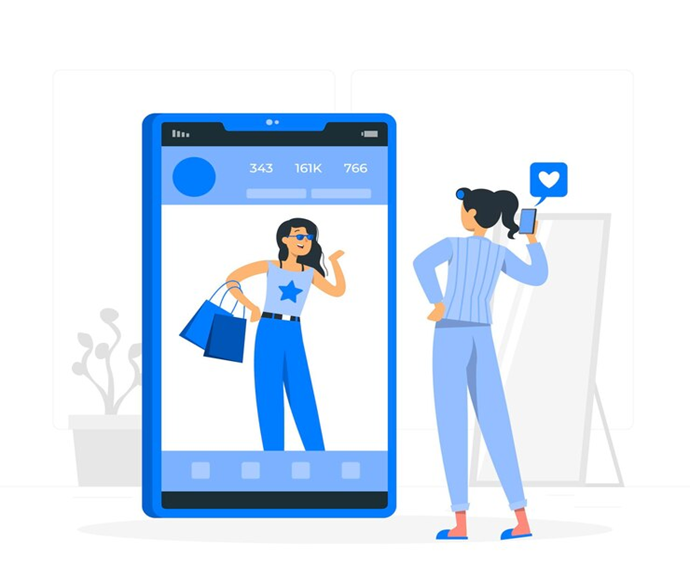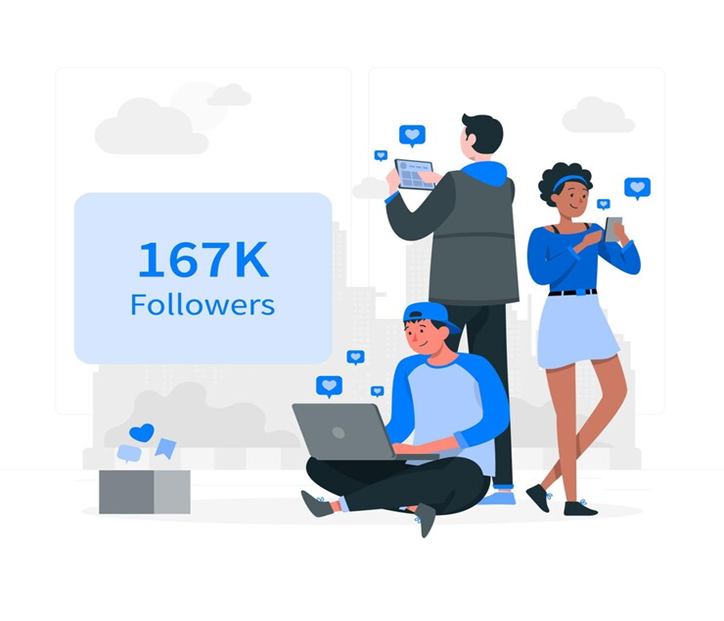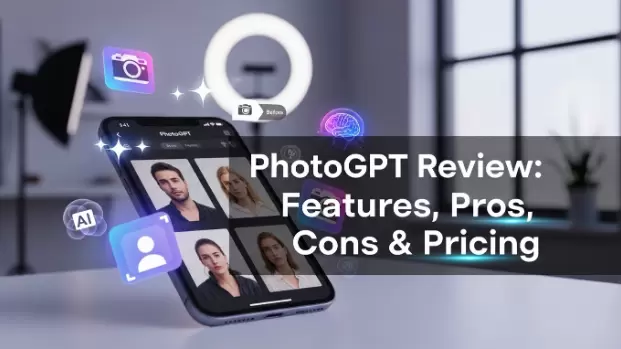In the heavily active and busy world of digital marketing, Influencer Marketing has appeared as a powerful strategy to connect with target audiences. This form of marketing takes advantage of the popularity and influence of individuals with a significant social media following. Let's explore the definition of Influencer Marketing by tracing its evolution and highlighting upcoming trends.
What is Influencer Marketing?
Influencer marketing is a promotional strategy that involves partnering with individuals who have a considerable number of engaged followers on platforms like Instagram, YouTube, TikTok, and other social media channels.
These individuals, known as influencers, are typically experts in a specific niche or have a solid personal brand. Brands collaborate with influencers to create content that promotes their products or services, with the goal of reaching and influencing the target audience.
Evolution of Influencer Marketing
The roots of influencer marketing can be traced back to the early days of celebrity endorsements, where brands collaborated with well-known personalities to get their products approved by what was considered a higher level of society. However, the digital age has transformed this concept, allowing individuals from diverse backgrounds to become influencers based on their online presence and content creation skills.
The evolution of Influencer Marketing involves the shift from macro-influencers (celebrities) to micro-influencers (individuals with smaller but highly engaged audiences).
This shift has proven to be more effective in creating authentic connections between brands and consumers, as audiences often perceive micro-influencers as more relatable and genuine.

The Rise of AI Influencers
As technology advances, one of the emerging trends in Influencer Marketing is the introduction of AI Influencers. These are virtual entities created using artificial intelligence algorithms to simulate human-like behavior and appearance.
AI Influencers are capable of generating content, interacting with followers, and even collaborating with brands.
The advantages of AI Influencers include their availability 24/7, lack of personal biases, and the ability to adapt quickly to new trends. Brands can use AI Influencers to complement human influencers or explore entirely virtual marketing campaigns.
Early Instances and Examples:
The rise of AI influencers is a relatively recent phenomenon that showcases the intersection of technology and marketing. Early instances of AI influencers gained attention for their ability to engage audiences and generate content seamlessly.
Lil Miquela:
Lil Miquela, created by the company Brud, is an AI influencer with a human appearance. She has a distinctive style and engages in online activities such as sharing fashion trends and music preferences and collaborating with real-life brands.
Shudu Gram:
Shudu Gram, known as the "world's first digital supermodel," was created by photographer Cameron-James Wilson. Shudu gained popularity in the fashion industry, participating in photo shoots and campaigns despite being entirely computer-generated.
These early instances demonstrated the potential of AI influencers to capture audience attention, challenge traditional marketing norms, and blur the lines between virtual and real-world experiences.
Impact on the Influencer Marketing
The introduction of AI influencers had a remarkable impact on the influencer marketing industry, bringing both opportunities and challenges.
Extended Reach and Availability:
AI influencers are not bound by physical limitations or time zones. They can engage with audiences 24/7, providing brands with an extended reach and continuous presence on social media platforms.
Authenticity and Transparency Challenges:
While AI influencers can generate compelling content, there are concerns regarding authenticity and transparency. Audiences may question the genuineness of interactions, as AI influencers lack personal experiences and emotions. Maintaining transparency about the virtual nature of these influencers becomes crucial for building trust.
Innovative Brand Collaborations:
Brands have started to explore innovative collaborations with AI influencers, incorporating them into marketing campaigns to generate buzz and curiosity. These collaborations often involve AI influencers promoting products, participating in virtual events, and even participating in the content creation process with human influencers.

Adaptability and Consistency:
AI influencers offer a level of consistency and adaptability that human influencers may struggle to achieve. They can quickly adapt to changing trends, ensuring that brand messaging stays current and relevant in the fast-paced world of social media.
Moreover, the advent of AI technology has extended its influence beyond influencers, reaching into the realms of advertising and content creation.
In the realm of brand promotion and innovative approaches, brands are increasingly starting to leverage AI tools, incorporating logo design techniques with the help of expert UI/UX designers, such as using an animated logo maker to create dynamic and visually appealing representations of their brand identity.
Some tools like an AI ad maker and an AI text generator are used to simplify the process of creating compelling advertisements and written content. This integration of AI into various facets of marketing showcases the industry's ongoing evolution, where technology continues to shape and redefine how brands connect with their audiences in the digital age.
Micro-Influencers and Niche Markets
The role of micro-influencers has become increasingly well-known and essential. Micro-influencers are individuals who have a smaller but highly engaged following on social media platforms.
Unlike macro-influencers, who often have a massive and diverse audience, micro-influencers typically focus on specific niches, creating a more intimate and authentic connection with their followers.
Micro-influencers offer a more defined and targeted reach because of their smaller follower count. Their audiences often include individuals genuinely interested in a particular niche, allowing for more personalized and genuine interactions.

High Engagement Rates:
Micro-influencers tend to have higher engagement rates compared to larger influencers. With a more closely-knit community, their followers are often more actively involved, resulting in increased likes, comments, and shares on their content.
Cost-Effective Collaboration:
Collaborating with micro-influencers can be a cost-effective strategy for brands, as they often charge lower fees than macro-influencers. This affordability allows brands to allocate resources more efficiently and engage with multiple micro-influencers to target diverse niches.
Understanding Niche Markets:
Niche markets represent specific population segments with shared interests, needs, or preferences. Micro-influencers play a crucial role in targeting these niche audiences because of their deep understanding and connection to specific subjects, hobbies, or industries.
Building Trust and Credibility:
Micro-influencers are often considered authorities within their niches. Their followers perceive their recommendations and content as more genuine and trustworthy, enabling a sense of credibility that might be challenging for larger influencers to achieve in diverse markets.
Tailored Content and Campaigns:
Targeting niche audiences through micro-influencers allows brands to create tailored content and campaigns that resonate with the specific interests of that demographic. This level of customization enhances the relevance of the marketing message, increasing the likelihood of positive reception.

Growing Importance of Authenticity
In the reality of influencer marketing, authenticity has become the main factor for successful brand collaborations. Audiences are increasingly drawn to influencers who showcase genuine experiences and opinions, as opposed to extremely promotional content.
Transparency is a vital component in influencer partnerships, ensuring that audiences are aware of the nature of collaborations. Regulatory bodies and social media platforms have also emphasized the need for transparency, leading to guidelines and features such as hashtags like #ad.
The open acknowledgment of sponsored content allows for more transparent influencer marketing, promoting ethical practices and maintaining the authenticity valued by audiences.
Emergence of New Platforms and Formats
Influencer marketing has witnessed a significant shift towards video content, with platforms like YouTube and TikTok taking over the top charts. YouTube influencers often incorporate "shopping survey" elements into their diverse and long-form content, offering in-depth reviews, tutorials, and entertainment.
On the other hand, TikTok's short-form videos have become a ground for viral challenges and quick, engaging content. More brands take advantage of these platforms every day to connect with audiences through authentic and visually appealing video content.
The introduction of temporary content on platforms like Instagram and Snapchat has revolutionized influencer marketing. Stories and brief content offer a more spontaneous and unpolished look into an influencer's daily life, fostering a sense of closeness and connection with their audience. Brands now integrate themselves into this type of content, creating a more authentic and in-the-moment experience for followers.
Influencer Marketing Strategies Over the Years
Collaboration Trends:
The evolution of influencer marketing has seen shifts in collaboration trends. While macro-influencers were once the primary focus, the trend has shifted towards micro-influencers for their niche audiences and higher engagement rates.
Additionally, brands are diversifying their strategies by collaborating with a mix of influencers, including nano-influencers, celebrities, and even AI influencers, creating a more dynamic and inclusive approach.
Metrics and Measurement Tools:
Advancements in influencer marketing have led to a greater emphasis on metrics and measurement tools. Brands now rely on data analytics to assess the effectiveness of influencer campaigns.
Engagement rates, click-through rates, and conversion metrics play a key role in evaluating the impact of collaborations. Such tools help brands see their return on investment and understand whether the content is relevant to certain influencers' audiences and whether they are worth collaborating with more often.
Challenges and Controversies:
Issues of Fake Followers and Engagement:
One of the challenges bothering influencer marketing is the majority of fake followers and engagement. Some influencers try purchasing followers or engagement to appear more influential than they truly are. Brands face the risk of investing in collaborations that may not reach a genuine audience, so they are turning to authenticity-focused metrics to identify influencers with authentic reach and impact.

Influencer Marketing Ethics:
Ethical considerations have gained importance in influencer marketing. Brands are now expected to collaborate with influencers who align with their values, ensuring that partnerships maintain integrity and positively contribute to the influencer marketing experience within their brand.
Future Trends in Influencer Marketing:
AI-Driven Content Creation:
AI will enhance content creation with advanced image recognition and natural language processing, leading to more personalized and engaging content.
Data-Driven Campaigns:
Data analytics will shape influencer marketing strategies, providing insights for identifying trends, preferences, and optimal collaboration opportunities.
AI Influencers' Evolution:
AI influencers will become more human-like and common, blurring the lines between virtual and human influencers.
Shifting Trends in Influencer Selection
Focus on Micro and Nano-Influencers:
Brands will continue to collaborate with micro and nano-influencers for authenticity and higher engagement, connecting with niche audiences.
Diversification of Platforms:
Marketers will diversify platform choices, adapting strategies to appearing platforms and formats beyond Instagram, YouTube, and TikTok.
Long-Term Partnerships:
Brands will be more open to longer-term partnerships, emphasizing sustained relationships for authenticity and trust by moving away from one-time campaign partnerships.

Key Takeaways and Recommendations for Marketers:
Embrace authenticity and transparency, explore AI integration, adapt to shifting influencer trends, and invest in data analytics for successful influencer marketing in this constantly shifting and evolving digital world.


 Table of Content
Table of Content










